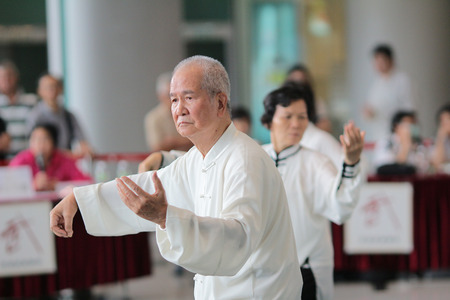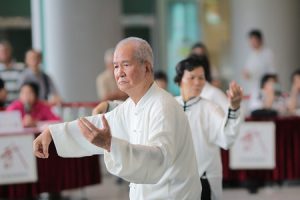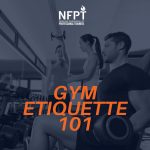
Learn to become a culturally diverse personal trainer by creating a “melting pot gym” for new clients whether or not foreign travel is within your grasp.

Every country across the globe takes pride in its various cultures and traditions. Among those is a unique version of what is considered “ideal physical beauty”, placing a slightly different emphasis on various aspects of aesthetics. Therefore, it comes as no surprise that physical recreation — or even the total lack thereof — varies around the world.
The United States has long been described as the “melting pot of the world”, as we have always welcomed individuals from foreign shores to consider our country a safe, stable land upon which to establish new roots. As this practice continues today, we will often encounter individuals in all aspects of our daily lives who may be 1st generation Americans. This includes our gyms and fitness centers.
Viva La Diversity
While we may pride ourselves on offering clients a state-of-the-art workout facility, fully equipped with the best machines on the market and up-to-the-minute group exercise disciplines, a new member or client who hails from another country may find this environment intimidating.
For starters, it behooves us to realize that exercise practices differ vastly from country to country. In Bangladesh, badminton is all the rage. In fact, the capital city makes every effort to create even temporary courts, often stringing clotheslines between trees or bars on windows. Cricket, too, is very popular. However, few if any natives venture into traditional gyms.
The Chinese take great pride in their practice of group calisthenics. Public parks become recreational areas for older individuals engaging in Tai Chi, backwards walking, and vigorous arm movements, in an attempt to improve circulation. Those individuals growing up in Paris, France stay fit while swimming, running or walking, but not for reasons of health or aesthetics. The French simply undertake these sports for the sake of pure enjoyment. Similarly, the French practice of Parkour cultivates strength, endurance and agility by overcoming outdoor obstacles with a variety of runs, jumps and climbs…again, simply because it is fun!
Even in chilly winters with precious few hours of available sunlight, fitness-minded folks in Sweden prefer the use of outdoor gyms. They tout the advantages of being free, less crowded, and less sweaty/more hygienic than our fitness centers. Point taken!
Incorporate, Acclimate
Armed with the knowledge of such diversity, we can expect to see surprised expressions on the faces of clients who are steeped in the traditions of their countries of origin, where physical fitness culture does not even remotely resemble our gyms. As personal trainers, it is our job to maintain an open mind and have a healthy respect for different ways of thinking.
Take the time to sit with a client who is new to the Western world; listen, learn, and ask questions; display a genuine curiosity for the cultures they may have left behind; help them discover the possibilities you can offer in a patient, straightforward manner. Above all, be willing and prepared to explain how your gym’s exercise equipment works.
Time-honored cultural traditions will sometimes present a challenge for trainers and clients. Women from Saudi Arabia love exercises focusing on strength, stretching and gymnastics; however, for Saudi females, fancy form-fitting athletic clothing is not an option. Some exercises you may have chosen to include in a program for such a client might need modification if she is wearing a longer, looser garment. Although pop music too is forbidden in Saudi Arabia, behind closed doors where men cannot observe, these ladies love Zumba classes!
Observing Faith-Based Challenges
In a similar manner, the constraints of one’s faith don’t often come to mind when designing a personal training regimen. However, an Orthodox Jewish woman, perhaps new to this country, faces modesty issues that can limit an exercise program. Traditionally, the most pious of Orthodox Jews may not exercise without a skirt covering the knees and a scarf/wig covering the head. Those who practice such traditions also may not swim in a co-ed pool. For such individuals, being sensitive enough to restrain from suggesting a group water aerobics class will be greatly appreciated.
Flexibility, creativity and a willingness to step outside of the typical personal training box can serve as a springboard for working with the aforementioned populations. In Bangladesh, Mongolia and Malawi, for example, sheer physical labor as a way of life is how these individuals are accustomed to maintaining strong, lean physiques.
If you encounter a new client from one of these countries, a program such as CrossFit or an outdoor circuit-training boot camp might fit his needs as well as catering to his comfort zone. Aspects of these exercise disciplines can also be woven into a more traditional 60-minute training session, serving as a way of integrating familiar moves while also introducing exercises typical of the Western world.
How We Can Help And Grow Together
It seems as if there are many cultures whose recreational traditions will demand our respect and understanding if we choose to work with such populations. There are, however, many ways we can honor one’s country of origin and at the same time make him feel comfortable and accepted in what can be viewed as a very foreign scenario/location.
Instead of having a client warm up by cycling on a stationary bike for 5 minutes, offer some suggestions that may be more familiar, such as mountain-climbers, body-weight pull-up’s, push-ups or wind sprints. Create a cordoned-off area on your Fitness Center floor where observant religious women may be trained comfortably.
Do not shy away from asking for input from your new client, during your initial assessment. An avid exerciser will no doubt be forthcoming with preferences in terms of exercise disciplines, especially if he is eager to begin training. The more often you meet with such clients, the more you will begin to cultivate a strong partnership, built upon both his culture and yours.
[info type=”facebook”]Have you had a training experience with a client from another country? If you’re an NFPT trainer, join the Facebook Community Group to chat with other trainers. If you’re not, come talk with NFPT here, we would like to meet you.[/info]
REFERENCES
- http://www.slate.com/articles/life/fitness/2011/01/fitness_for_foreigners.html
- http://paulford.com/a/beauty-in-different-cultures/
- https://virtuagym.com/blog/other/cultural-diversity-gym/
- https://www.theactivetimes.com/interesting-ways-people-stay-fit-around-world
- http://www.shape.com/fitness/workouts/how-women-around-world-work-out
- https://www.washingtonpost.com/lifestyle/wellness/the-challenges-of-exercising-for-some-muslim-and-orthodox-jewish-women/2012/03/08/gIQATrSLPS_story.html?utm_term=.6f5c3cd67074







